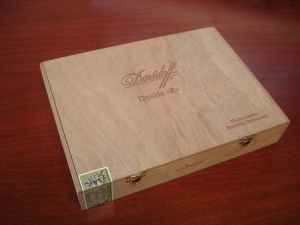Over the years I’ve been fascinated at how some packages experience a second life. When I was little, my mom used to save flour and sugar in old potato chip tins. Many of my friends saved various valuables in their fathers’ Crown Royal velvet whiskey satchels. Breath mint tins always appeared to be interesting storage devices becoming way stations for stray pennies.
At left is a cigar box which I have on my desk at work. Inside it I keep numerous pens, pencils and other office items that I use regularly. Over the years I’ve had cardboard ones and other times I’ve been lucky enough to snatch the wooden boxes. These have more texture and character and some even come with dividers inside for easy sorting and compartmentalizing of items.
When we design packaging for our clients we consider sustainability in regards to materials and manufacturing. At times we also look into creating that “second life” for the package if possible. By second life I am referring to the examples mentioned above – not the avatar online world. We also look to see if the package can serve more of a purpose for some of the products thus lengthening its life prior to recycling or a landfill. Once we proposed using the package for an electronic device as a storage base (for both the product and the user manual) with charging capabilities for the product’s electrical needs.
We’re always curious to see if we can create that second life for the packages we design or if the consumer does so, as that seems to serve as the true testament of creativity. These second lives are a reflection of times and occurrences in society (financial recessions, cinematic events, etc.) and connecting these is somewhat serendipitous. All in all, it does show that packaging does serve more than just the role of containing a product and living a short life. If anything, it offers all of us the opportunity to look into sustainable options when possible.

